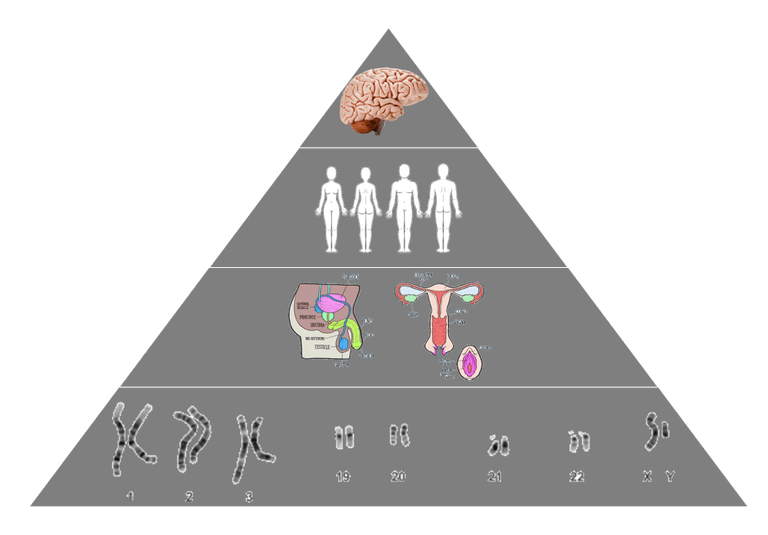From time to time, we like to highlight content from others in the Transgender community. Many of us have important contributions on a variety of topics, we love helping to amplify their voices and the important things they have to say.
One important topic area is the biological basis for gender dysphoria, that basic reason many of you, reading this piece, cross-dress, transition, live part time in both genders, are bi-gendered, or identify as gender queer. It is not a lifestyle, this is our lives. None of us are making this up. But with so many voices today denying the biology, TCNE will be on occasion posting the science behind it. Fascinating reading and worthy of your time. So grab a cup of coffee and let’s start.
Our first piece kicking off this occasional series is from the blog “A Nerdy Trans Girl“, Michaela, the webmistress and lead writer, is a scientist, a bioengineer by trade in fact and she has some important facts to scientifically present on this topic. Her article, “An (epi)genetic understanding of gender expression” is well worth the read, we are posting a part of it here, but please go back to her blog to read the full piece, well worth your time. In her piece she covers the basics and more on the genetics behind gender, some thoughts on variations and finally focusing on all of us in the transgender community. This is no scientific research paper, but a approachable and easily read overview. Here’s a few paragraphs from her article:
“Being a transgender bioengineer has its pros and cons. On one hand, it gives me a huge advantage when navigating through the minefield of hormonal transition (given the huge difficulties transgender people face when trying to find a suitable endocrinologist). On the other hand, I have to listen to/read comments from people who haven’t had a biology class since high school explain chromosomes to me. But alas, as Aristotle once said, “With great knowledge comes great mental indigestion.
Anyways, you science geeks out here are going to love this. And for the non-science people, I’ll do my best to use every metaphor I know to keep my article interesting and engaging, while hopefully teaching you some sweet nuggets of biology along the way! As you have probably guessed from the title of this article, the title of my blog, and literally everything else about this website, we’re going to be talking about LGBT stuff. Specifically, I want to address one of the primary arguments transphobes throw out to try to convince others that this condition isn’t real: that if you were born with an XY chromosomal structure, you are a genetic male (and a genetic female if you have an XX chromosomal structure). Now, don’t get me wrong, in 99.9% of cases, this logic usually holds true. XY -> penis -> men. XX -> vagina -> women However, if we zoom out from the genitals for just a second, we can see pretty easily that there is more to a man or woman than what’s inside their pants. And if you keep reading you’ll see how the definitions of a ‘man’ or a ‘woman’ are a bit more blurry than you might think. Lastly , I hope to explain how the same genetic code can be manifested in entirely different ways (which is the science of epigenetics) and how this pertains to the transgender individual.
Get ready, cause’ I’m about to Mrs. Frizzle your face off.”
“Part 1: Defining the areas of gender expression”

“So to start, I’d like to propose we segment the human body into four different areas where gender can be expressed:
- The chromosomes (this is the genetic code most widely asserted as being the end-all for gender discussions
- The genitals, like we mentioned before. This is known as a person’s primary sex characteristic.
- The body. This included secondary sex characteristics, such as hair growth, muscle mass, breasts (or lack thereof), bone structure, bone density, and fat deposition patterns.
- The brain. While the majority of brains have a unique blend of masculine and feminine features [REF 1], there are documented physiological differences in certain areas [REF 2]. These manifest as behavioral and structural differences in areas such as the hypothalamus and the stria terminalus [REF 3] (a small region in the inner brain).
Now, why am I separating the genetics from the genitals, brain, and body? Well, the reason is that each of these areas can be male or female (independently of each other) based on a complex series of events that arise during conception. In most cases, all four of these areas are consistent with each other. The XY chromosome of a man triggers formation of the testes, which release testosterone, which signals the body to form male secondary sex characteristics. And, most importantly, their brain is that of a male’s. This same thing happens for a woman – the ovaries triggered by the XX chromosome produce estrogen, which makes female secondary sex characteristics, and the female brain has no problem with that. However, the chromosomal structure does not always have the final say in the ‘sex’ of the gonads, body, or the brain. The reason for this is because genetics are not the only piece of this puzzle – we must also consider epigenetics.”
To read more of this excellent article, please visit Michaela’s article, “An (epi)genetic understanding of gender expression“.
